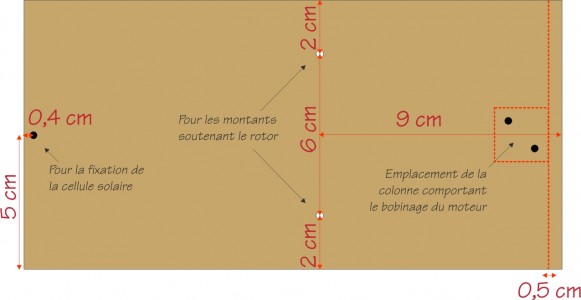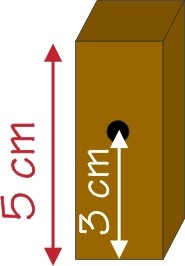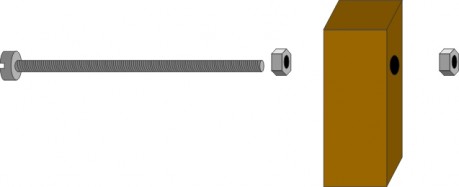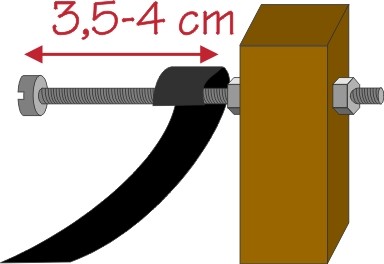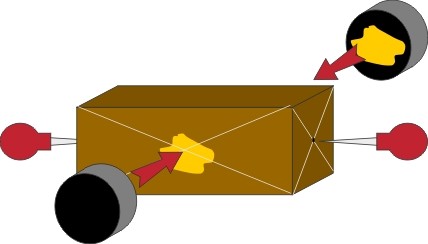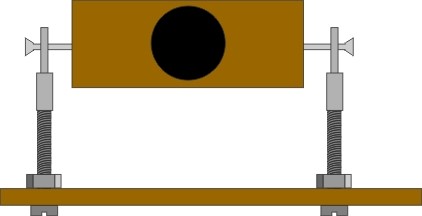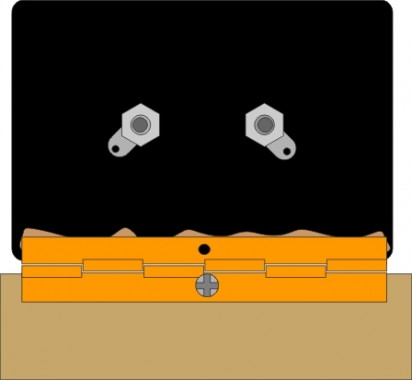 How to use ? - Solar electric motor
How to use ? - Solar electric motor
Step 6
Place the element with the copper reel on the board (2 x 2 cm square indicated on the model).
Fix it from underneath the board with 2 wood screws (3,0 x 20).
Pass two M4 x 30 bolts through 2 holes in the Board and attach them the other side with nuts. Tighten with pliers and a screwdriver.
Using pliers, remove the plastic elements of two flat 'faston' connectors.
Screw the 2 connectors on top of the bolts fixed on the board.
If they are too loose, slightly tighten the metal tube at the base of the connectors with pliers.

Step 9
Using pliers, very carefully bend the "legs" of the "reed switch" to create a "bridge" with a distance of 2.5 cm between the folded legs. The metal contact blades in the "reed switch" must be in the same axis than the "legs".

The reed switch is very fragile. Never bend on the side of the glass bulb. Hold the "leg" with pliers and bend on the "outer side". Insert and fix the "legs" of the "reed switch" in the centre of a strip of 6 electrical connectors. Check that the "legs" are squeezed properly by the screws.
Connect a 15 cm electrical wire opposite of one of the "legs" and opposite the other one, the copper wire coming from the reel.

Step 12
Adjust the screw head of the copper reel as close as possible of the magnets, but without touching them.
Adjust the location of the "reed switch". To check if the motor works, it's easier to use instead of the solar cell a 1.5 volt battery .
Move carefully the reed switch and locate the position where the engine runs the quickest (to start, give the rotor a little pinch).
Reverse polarity to choose the direction with the fastest rotation.
Secure the "reed switch" in position with 2 screws (3, 0 x 20) passed through the holes at the ends of the strip of electrical connectors.
Screw two eye screws on the side of the board. Pass and tie the wires before connecting them to the solar cell.
Check that the rotor turns in the direction that proved to be the most effective in the tests.
Decorate the board as a 'robot'.

 |  |  |  |  |  |  |  |  |


